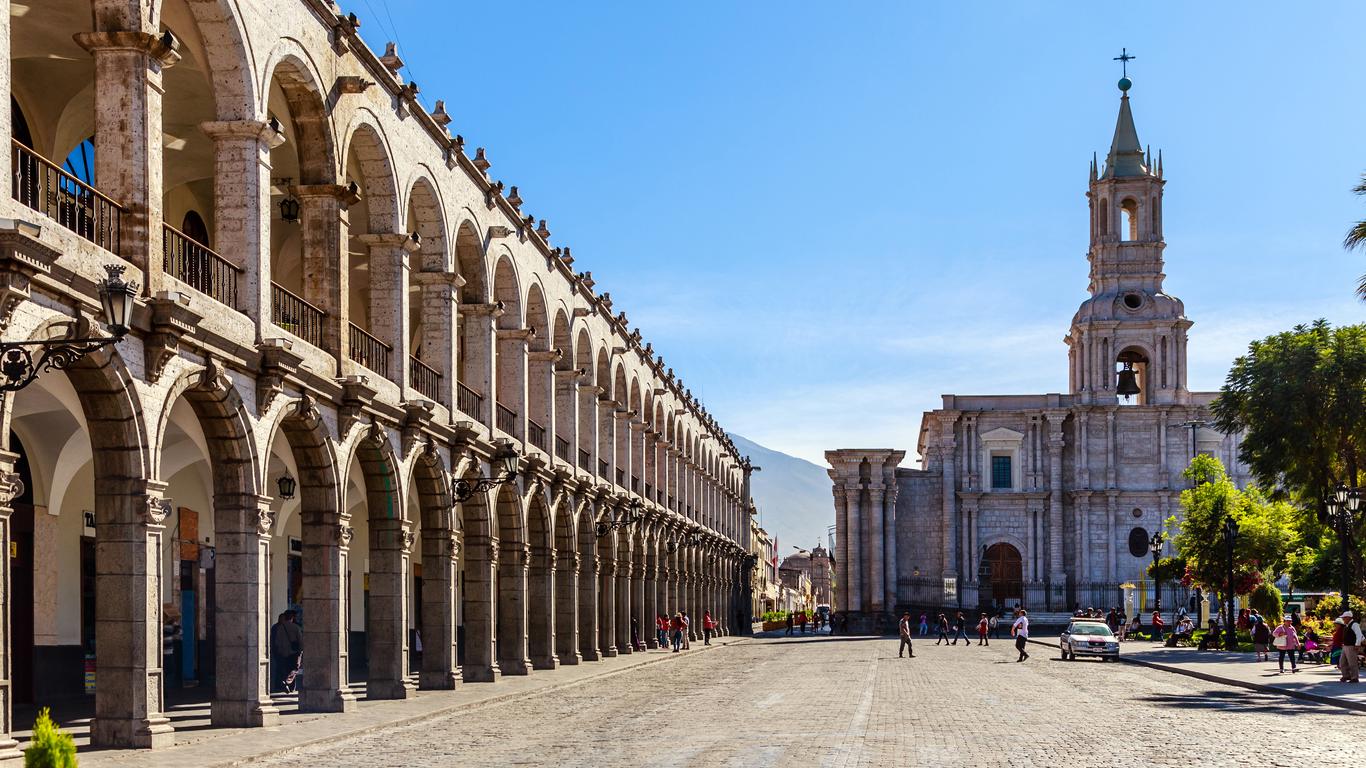Home to the Constitutional Court of Peru, Arequipa is one of the most significant cities in the country, and the second most populated with a population of over 1861,000 people. It is also the largest city and capital of its region, a major export destination of Peru and main industrial centre, manufacturing local goods and camelid wool for sale across the world. Arequipa is full of culture, history and nature, with numerous tourist attractions, unique architecture and a UNESCO World Heritage Site as its city centre, all sitting in the shadow of three magnificent volcanoes.
A main sight of Arequipa is its historic city centre, an official UNESCO World Heritage Site that encapsulates the unique architecture of the city blending native styles with European design in the form of churches, monuments and official buildings. Various parks can be found within the city, including the 10 square kilometres Parque Ecològico Alto Selva Alegre that surrounds the Chilli River, or visitors can explore other cultural attractions like the Museo Santuarios Andinos or Basilica Cathedral. Visitors can easily embrace the nature of Arequipa by climbing the surrounding volcanoes, with El Misti offering the easiest hike at the height of 5,822 metres, although there are also tour buses navigating the slopes and offering rides part way up. In addition to hiking, visitors can go white water rafting on some of the most popular rivers in the world or embrace Peruvian culture through a cooking class, food experience or by taking local Spanish classes.
The nearest airport to Arequipa is Rodríguez Ballon Airport, located less than 10 kilometres from the city, with connections to the city via taxi or private hire. Buses travel into two major terminals both less than five kilometres from the centre. Within Arequipa, visitors can explore by foot with most attractions within walking distance, although there are also taxis, bus tours and local buses available.
Indigenous tribes originally occupied the land of Arequipa City, including the Inca people, who used the area around the Chilli River for agriculture and fishing. Spanish settlers arrived in the area in 1540 and developed the city into a place of industrial and commercial power, becoming the second city of Peru after Lima. Its historic centre was made a UNESCO World Heritage Site in 2000, but the city faced an earthquake of an 8.4 magnitude a year later which damaged many of its old buildings.





